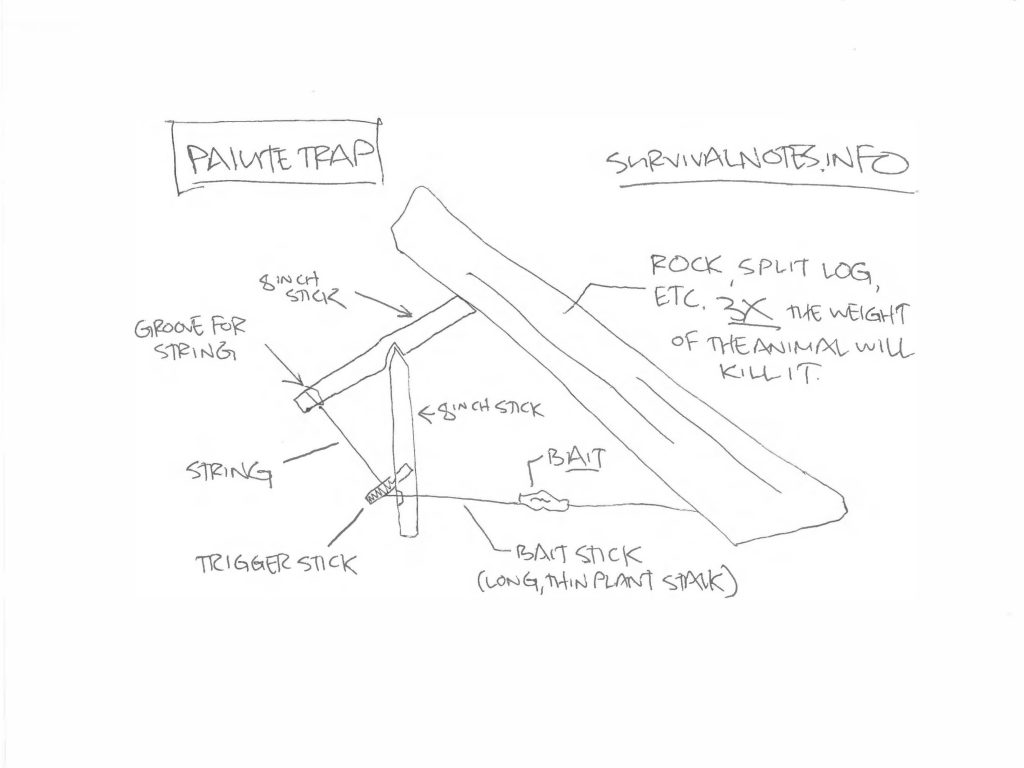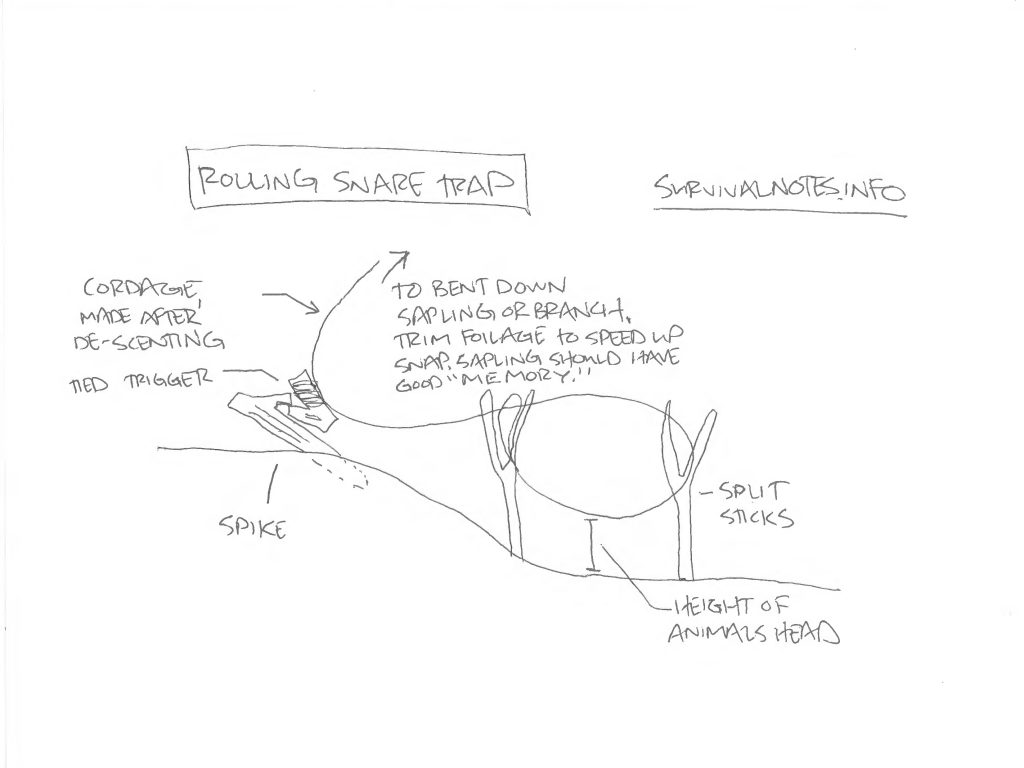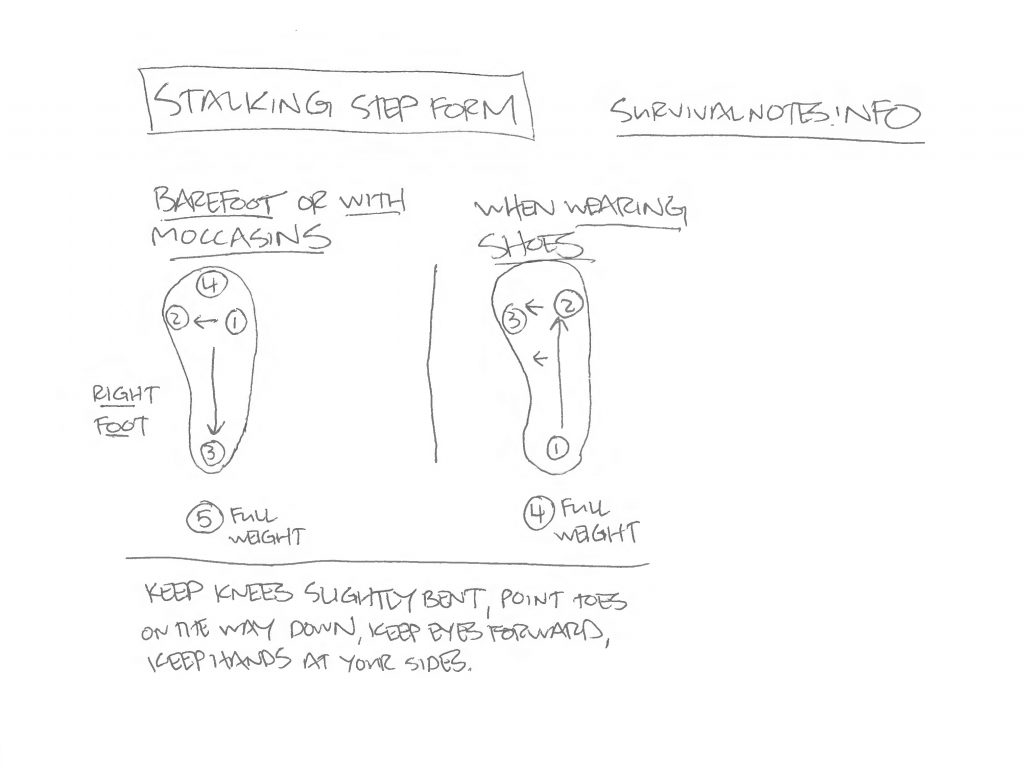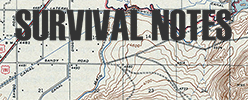ANIMALS
In a true survival situation, especially when the weather is cold, one often needs to harvest animals as well as plants.
- Many native peoples made no separation between plants and animals. Hunters would often fast and pray extensively before beginning the hunt.
- Any animal with fins, fur, feathers, or scales is edible. However, beware of the following diseases:
Rabies – a virus; any animal acting out of context should be viewed with suspicion, as potentially rabid. Wash the site of a bite immediately and thoroughly!
Tularemia – rabbit fever, look for yellow splotches on liver
Bubonic Plague – fleas on some ground squirrels carry it
Hantavirus – transmitted by mice feces and urine
Cooking Thoroughly kills all these diseases. In general, beware of cuts on your hands and don’t eat unhealthy looking animals.
Hunting:
Hunting involves the use of many skills, including knowledge of traps, use of weapons (throwing stick, fish spear, bow and arrow, etc.), stalking skills, and by far the most important, tracking skills.
TRAPS
The following traps are very old designs, are very effective, and very illegal, and should only be used on a true survival situation.
- Half of effective trap making is getting good materials
- All trap parts must be scent free. Before even gathering wood, you need to de-scent hands, footwear, knife, etc. Do so with the following steps:
- Use the bathroom
- Wash hands the best you can
- Crush up leaves indigenous to the area, rub on hands, shoes, knife, etc.
- Rub hands, shows, knife in charcoal powder


WEAPONS
Throwing Stick
- For small game 10-12 paces away
- A throwing stick should be crafted from a solid, hard wood, armpit to palm in length, thumb to 2nd finger in diameter. Smooth off branches and knots, and hold from the thinner end.
- The throw must come quickly from an absolutely still position. Keep your free hand stuck to your body; don’t wind up.
- For extended situations, a throwing stick can be carved with a thinner mid-section for more control and a weighted throw.
CAMOUFLAGE
- Before camouflaging yourself, observe the area from afar. Look for colors, texture patterns, shapes, and especially shadow patterns.
- Camouflage scent by either sweat lodge and fasting, rubbing pungent indigenous plants all over your body, or covering yourself with charcoal or ash.
- Camouflage your body to exactly fit the hunting area:
- Dull: Dull down all parts of body
- Dapple: odd lights, darks, patterns
- Blend: Eliminate all harsh outlines
- Fuzz: Roll on ground or rub on debris to buff out body hair
- Dull/Dappling agents include Ash, Charcoal dust, Mud, Clay, Loan, Soil, Dust, Rotted Wood
- *Warning: don’t use wet ash! It burns the skin!
- Spiritual Camouflage: Stay in Wide Angle Vision, Mask your intent, Clear your Mind
STALKING
- Stalking is truly an art that requires strength, agility, and patience. Watch herons and cats – they are the true masters.
Hints: SLOW! – Start with 60 seconds per step. Keep your movements flowing and continuous.
- You must be able to stop at any time.
- Every movement must be at stalking speed.
- Camouflage your spirit

